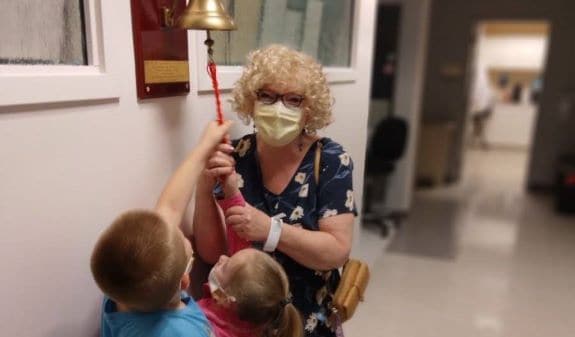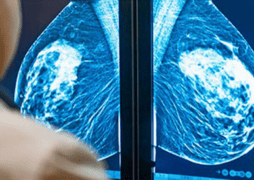It’s not hard to find media stories promoting the cancer-fighting benefits of one food or another. What can be hard is knowing whether today’s headlines are fact, fiction or something in between. The three tips below may help you make better sense of the headlines.
1. Studies done in the laboratory don’t always translate to people
Cell studies
Studies on the possible links between diet and cancer often start with studying cells in a laboratory. However, findings from cell studies cannot be directly translated to people. Cell studies can give insight into how certain nutrients or food compounds might work in the body to affect cancer cells. In this way, they provide clues to factors that might affect breast cancer risk, but they are a very early step in the research process.
Animal studies
If the results from cell studies are promising, research may progress to animal studies (often done in mice). Animal studies can build on findings from cell studies and add to our understanding of how and why some factors might affect breast cancer risk in people. However, animal studies do not replace human studies, nor can we expect the results to be the same in people. There are many differences between animals and people that make it hard to translate findings directly from one to the other. For example, some nutrients can work completely differently in animals than in people.
Animal studies are also designed differently than human studies. They often look at exposures in larger doses and for shorter time periods than would be used in people. Thus, we need human studies to decide whether something helps prevent or treat cancer in people, as well as what doses are considered to be safe.
How to tell if findings are from studies of cells, animals or people
When research findings are from a study of cells or animals, we cannot know whether they translate to breast cancer risk in people. If you do not see the words “women” or “people” in a media story on diet and breast cancer risk, the findings may be from a study of cells or animals, not people. While these findings may be interesting, remember they are early results and may not impact human health.
2. Remember, study size matters
Among research studies, there are great differences in quality. Even a trained scientist can have trouble deciding whether a study was well done or not.
One easy thing to remember is that large studies provide more evidence than small studies. A study that includes 1,000 people tends to give us more information than a study with only 10 people. When only a small group of people is studied, a finding may be due to chance rather than due to a true effect.
3. Look at the forest, not just one tree
Just as the number of people in a study is important, the more studies we have on a topic, the more confidence we have in the results. When only one study has looked at a particular subject, more studies are needed to confirm the results. For example, if one study showed a food was linked to breast cancer, but ten other studies did not, the evidence would still favor no link with cancer. In general, the more large human studies with similar findings there are, the more we can trust a food is linked (or not linked) to breast cancer.
Using these tips, let’s look at three examples of foods with increasing levels of evidence on possible links to breast cancer prevention: turmeric (curcumin), green tea and fish.
Turmeric
Curcumin is a dietary compound found in the spice turmeric. You may have seen turmeric promoted as a spice for breast cancer prevention.
While some studies have shown that curcumin has some anti-tumor effects, all of these were studies of cells or animals.1-2 Because of these promising cell and animal studies, human studies on turmeric and breast cancer are underway, but the results are not yet available. So, at this time, it’s too early to know whether turmeric offers any breast health benefits in people, nor what dose would be needed for that benefit.
Learn more about turmeric.
Green tea
Compared to turmeric, more research has been done on the possible breast health benefits of green tea. Green tea contains antioxidants, which may help protect cells from cancer.3 Cell and animal studies found green tea had some anti-tumor effects, leading researchers to study whether it might lower cancer risk in people.4
Some smaller studies showed women who drank a lot of green tea had a slightly lower risk of breast cancer compared to women who drank little or no green tea, but larger studies did not shown any benefit of green tea on breast cancer risk.5-9 In addition, two other studies found no link between higher blood levels of green tea antioxidant and breast cancer risk.10-11 So, although many studies have looked at green tea and breast health, the results remain conflicting.
Learn more about green tea.
Fish
As early as the 1970’s, fish intake was under study to see if it lowered breast cancer risk because countries where people ate a lot of fish tended to have lower breast cancer rates than countries where people ate little or no fish.12 Although that observation is true, the difference in breast cancer risk between countries does not appear to be due to differences in fish intake.
Most studies on fish intake and breast cancer risk have consistently found no link.13-17 Although omega-3 fatty acids (found in fish) are under study for a possible role in breast cancer prevention,18 fish intake does not appear to decrease breast cancer risk.
Learn more about omega-3 fatty acids.
Conclusions
The next time you hear someone promoting the breast cancer-fighting benefits of a food, pay attention to the details. Was the study done in people, or just with cells or animals? Was it a large study? Do the findings confirm those from previous studies? Armed with these tips, you can better interpret the health headlines.
Although a food may not lower your risk of breast cancer, it may still be part of a healthy diet. According to Dr. Julie Gralow, Professor of Medical Oncology at University of Washington School of Medicine, “There’s no question that good nutrition is important for good health. What’s less clear is how much impact individual foods, vitamins or supplements have on the risk of developing cancer or on cancer recurrence. I recommend a balanced diet, including a variety of fruits and vegetables and a focus on whole grains. Try to balance caloric intake with physical activity to maintain a healthy body weight. A healthy lifestyle has lots of health benefits, and it just makes sense.”
If you have concerns about a media story, several organizations conduct research and prepare summary reports of research on factors shown to have a link (or not) to breast cancer. They are a good place to find detailed, up-to-date information.
Centers for Disease Control and Prevention (CDC)
Food and Drug Administration (FDA)
International Agency for Research on Cancer (IARC)
Find more information
Learn how to find an individual study on breast cancer.
Learn more about the strengths and weaknesses of different types of breast cancer research studies and the importance of large studies.
Learn how to interpret measures of breast cancer risk.
References
- Aggarwal BB, Kunnumakkara AB, Harikumar KB, Tharakan ST, Sung B, Anand P. Potential of spice-derived phytochemicals for cancer prevention. Planta Med. 74(13):1560-9, 2008.
- Altenburg JD, Bieberich AA, Terry C, et al. A synergistic antiproliferation effect of curcumin and docosahexaenoic acid in SK-BR-3 breast cancer cells: unique signaling not explained by the effects of either compound alone. BMC Cancer. 11:149, 2011.
- National Cancer Institute. Antioxidants and cancer prevention: Fact sheet. http://www.cancer.gov/cancertopics/factsheet/prevention/antioxidants, 2004.
- Yang CS, Wang H, Li GX, Yang Z, Guan F, Jin H. Cancer prevention by tea: Evidence from laboratory studies. Pharmacol Res. 2011 Mar 21. [Epub ahead of print].
- Sun CL, Yuan JM, Koh WP, Yu MC. Green tea, black tea and breast cancer risk: a meta-analysis of epidemiological studies. Carcinogenesis. 27(7):1310-5, 2006.
- Michels KB, Mohllajee AP, Roset-Bahmanyar E, Beehler GP, Moysich KB. Diet and breast cancer: a review of the prospective observational studies. Cancer. 109(12 Suppl):2712-49, 2007.
- Yang CS, Wang X, Lu G, Picinich SC. Cancer prevention by tea: animal studies, molecular mechanisms and human relevance. Nat Rev Cancer. 9(6):429-39, 2009.
- Boehm K, Borrelli F, Ernst E, et al. Green tea (Camellia sinensis) for the prevention of cancer. Cochrane Database Syst Rev. (3):CD005004, 2009.
- Ogunleye AA, Xue F, Michels KB. Green tea consumption and breast cancer risk or recurrence: a meta-analysis. Breast Cancer Res Treat. 119(2):477-84, 2010.
- Luo J, Gao YT, Chow WH, et al. Urinary polyphenols and breast cancer risk: results from the Shanghai Women’s Health Study. Breast Cancer Res Treat. 120(3):693-702, 2010.
- Iwasaki M, Inoue M, Sasazuki S, et al. Plasma tea polyphenol levels and subsequent risk of breast cancer among Japanese women: a nested case-control study. Breast Cancer Res Treat. 124(3):827-34, 2010.
- Gray GE, Pike MC, Henderson BE. Breast-cancer incidence and mortality rates in different countries in relation to known risk factors and dietary practices. Br J Cancer. 39(1):1-7, 1979.
- Holmes MD, Colditz GA, Hunter DJ, et al. Meat, fish and egg intake and risk of breast cancer. Int J Cancer. 104(2):221-7, 2003.
- Folsom AR, Demissie Z. Fish intake, marine omega-3 fatty acids, and mortality in a cohort of postmenopausal women. Am J Epidemiol. 160(10):1005-10, 2004.
- Fung TT, Hu FB, Holmes MD, et al. Dietary patterns and the risk of postmenopausal breast cancer. Int J Cancer. 116(1):116-21, 2005.
- Engeset D, Alsaker E, Lund E, et al. Fish consumption and breast cancer risk. The European Prospective Investigation into Cancer and Nutrition (EPIC). Int J Cancer. 119(1):175-82, 2006.
- Sonestedt E, Ericson U, Gullberg B, Skog K, Olsson H, Wirfält E. Do both heterocyclic amines and omega-6 polyunsaturated fatty acids contribute to the incidence of breast cancer in postmenopausal women of the Malmö diet and cancer cohort? Int J Cancer. 123(7):1637-43, 2008.
- MacLean CH, Newberry SJ, Mojica WA, et al. Effects of omega-3 fatty acids on cancer risk: a systematic review. JAMA. 295(4):403-15, 2006.



